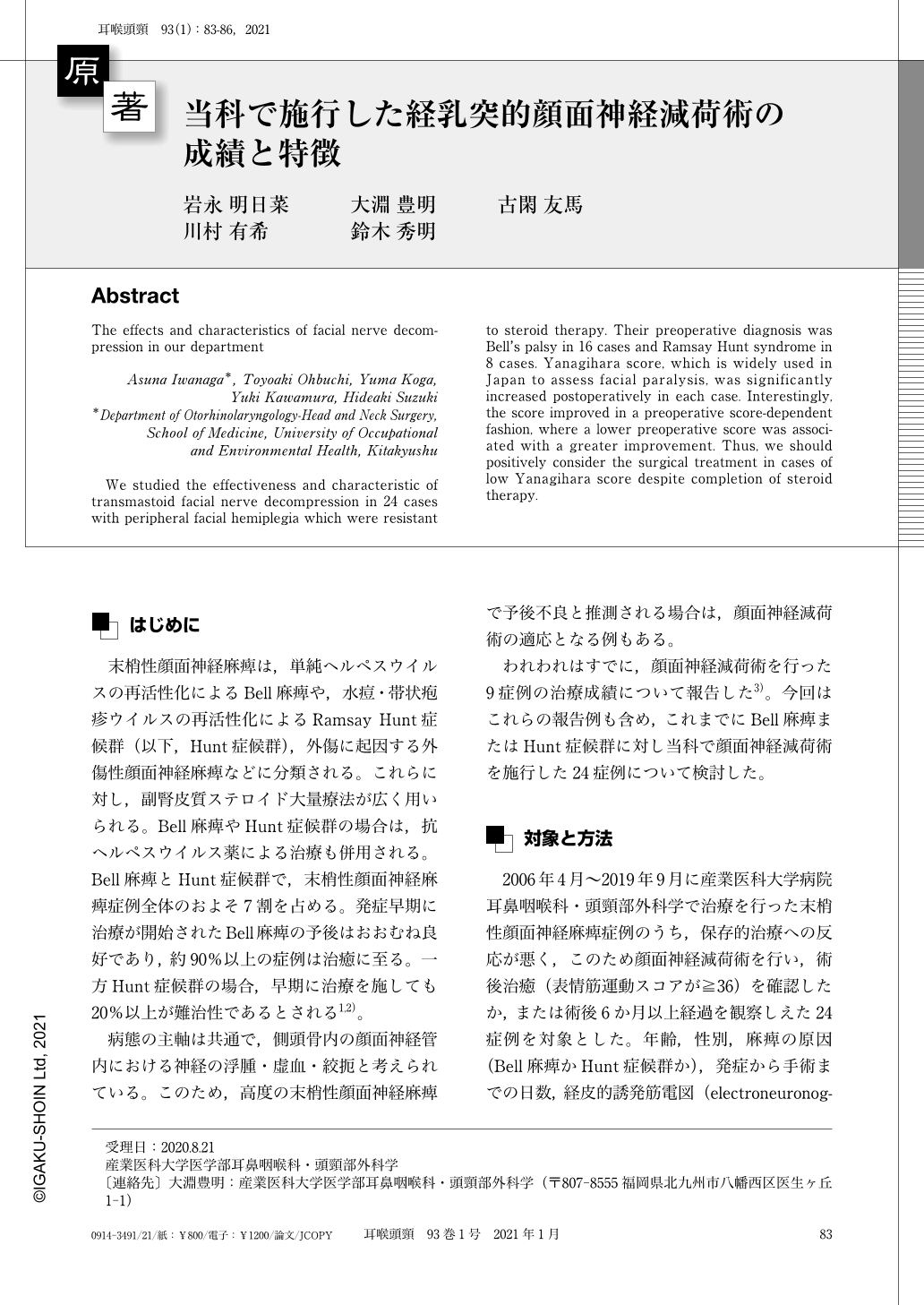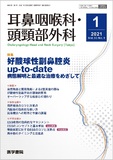Japanese
English
- 有料閲覧
- Abstract 文献概要
- 1ページ目 Look Inside
- 参考文献 Reference
はじめに
末梢性顔面神経麻痺は,単純ヘルペスウイルスの再活性化によるBell麻痺や,水痘・帯状疱疹ウイルスの再活性化によるRamsay Hunt症候群(以下,Hunt症候群),外傷に起因する外傷性顔面神経麻痺などに分類される。これらに対し,副腎皮質ステロイド大量療法が広く用いられる。Bell麻痺やHunt症候群の場合は,抗ヘルペスウイルス薬による治療も併用される。Bell麻痺とHunt症候群で,末梢性顔面神経麻痺症例全体のおよそ7割を占める。発症早期に治療が開始されたBell麻痺の予後はおおむね良好であり,約90%以上の症例は治癒に至る。一方Hunt症候群の場合,早期に治療を施しても20%以上が難治性であるとされる1,2)。
病態の主軸は共通で,側頭骨内の顔面神経管内における神経の浮腫・虚血・絞扼と考えられている。このため,高度の末梢性顔面神経麻痺で予後不良と推測される場合は,顔面神経減荷術の適応となる例もある。
われわれはすでに,顔面神経減荷術を行った9症例の治療成績について報告した3)。今回はこれらの報告例も含め,これまでにBell麻痺またはHunt症候群に対し当科で顔面神経減荷術を施行した24症例について検討した。
We studied the effectiveness and characteristic of transmastoid facial nerve decompression in 24 cases with peripheral facial hemiplegia which were resistant to steroid therapy. Their preoperative diagnosis was Bell's palsy in 16 cases and Ramsay Hunt syndrome in 8 cases. Yanagihara score, which is widely used in Japan to assess facial paralysis, was significantly increased postoperatively in each case. Interestingly, the score improved in a preoperative score-dependent fashion, where a lower preoperative score was associated with a greater improvement. Thus, we should positively consider the surgical treatment in cases of low Yanagihara score despite completion of steroid therapy.

Copyright © 2021, Igaku-Shoin Ltd. All rights reserved.


